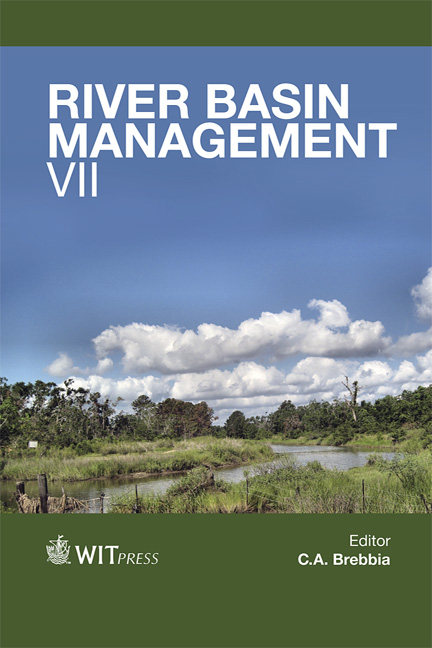Evaluation Of Metals In Water And Sediments Of Micro-basins In The City Of Americana, São Paulo State, Brazil
Price
Free (open access)
Transaction
Volume
172
Pages
12
Page Range
201 - 212
Published
2013
Size
479 kb
Paper DOI
10.2495/RBM130171
Copyright
WIT Press
Author(s)
G. A. de Medeiros, A. C. C. L. Tresmondi, B. P. V. de Queiroz, C. A. Melo, A. H. Rosa, C. V. Negro, L. F. Fraceto & A. I. Ribeiro
Abstract
Water pollution found in major rivers in Brazil has its origin from urban sewage discharges and industrial effluent, carried out by small streams and rivers crossing cities. Therefore, studies related to hydrographic micro-basins offer the opportunity to establish environmental management strategies for restoring water resources, based on diagnosis of the water quality. Despite this understanding, few studies in urban and rural areas have been performed in a systematic manner in Brazilian micro-basins. The main goal of this research was to diagnose the water resources in micro-basins in the region of the district of Americana, São Paulo state, Brazil, through the quantification of metals in water and sediment. The methodology was based on the investigation of metals (Ba, Cd, Cr, Cu, Fe, Mn, Ni, Pb, Zn), in four micro-basins, determined by inductively coupled plasma optical emission spectrometry (ICP-OES). The most significant result showed high concentration levels of chromium (969 μg L-1), downstream of the discharge of sewage from the city of Nova Odessa. This concentration in the river was above the allowed limit of Brazilian regulation agency (50 μg L-1 for Cr). Also high levels of Cr were found in the sediment (98.9 μg g-1) collected at the same monitored site. These results are important indicators of environmental performance and anthropogenic activities to help the government establish environmental management strategies aimed at the reduction of water pollution. Keywords: water resources, water quality, chromium.
Keywords
Keywords: water resources, water quality, chromium.





